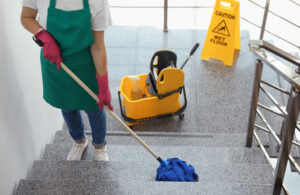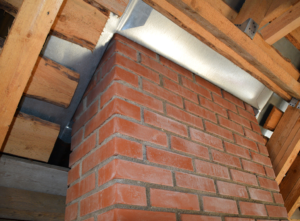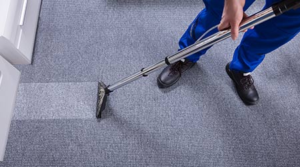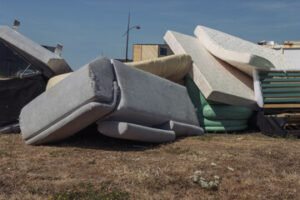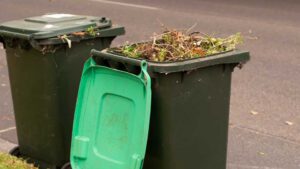An exterminator rids homes and businesses of pests like ants, rodents, and bed bugs. Their job involves assessing pest infestations, developing treatment plans, and choosing and applying pesticides.
Both exterminators and Knoxville Pest Control professionals want the same result – a clean, pest-free home environment. However, they use different methods to achieve this goal.
Pest Identification

Pest identification is an essential step in any integrated pest management (IPM) program. Accurately identifying the pest — whether it’s an insect, weed, disease or vertebrate animal — helps your company determine appropriate control tactics that don’t use harmful chemicals.
Many different kinds of pests look similar, especially when they are young or immature. This can make it difficult to identify a pest correctly and can lead to improper treatment that wastes time and money. Mistakes in identifying a pest also can result in applying controls that are inappropriate for the organism or even harm it.
A key to effective IPM is understanding the biology of pests – what they feed on, their habitat requirements and reproductive habits. Understanding this information can help prevent their damage to crops and other natural resources, as well as protect human health, the environment and museum collections.
For example, by determining an insect’s diet, you can prevent it from affecting a specific crop or collection item. Knowing what kind of food a pest feeds on will also allow your company to develop a prevention plan that does not involve using toxic chemicals.
Similarly, understanding the habitat requirements of a disease or parasite can allow you to prevent it from spreading to other plants or collections. In addition, by identifying the habitat in which a pest lays its eggs, you can prevent it from laying its larvae there.
In addition, to reducing the need for chemical control, by accurately identifying pests you can use cultural methods, which are non-toxic ways to address problems, before resorting to chemicals. This is particularly important when working with natural enemies or preserving and releasing beneficial insects to manage pests.
If you are unsure about the identity of a pest, consult with a knowledgeable person in your area who can assist with identification. Your local county extension service can provide this service for free, and a professional pest control expert will also be able to help. If you are unable to identify the pest, you can use an online identification tool such as the Pests of California Web site. This website provides photographs and information about many vertebrate pests that affect our crops, gardens, schools and parks.
Pest Prevention
Pests can cause costly damage to homes and businesses. In addition, they can carry diseases that affect human health. Some of these diseases, such as leprosy, skin infections and urinary tract problems, require extensive medical treatment or even hospitalization. Pests can also impact food safety by contaminating foods or water.
Pest prevention includes activities designed to stop a problem before it starts. This can include reducing the amount of food and water available to pests, fixing leaky pipes and draining standing water. It can also include creating barriers around buildings to prevent pests from entering.
Taking steps to avoid pests can also help reduce the use of pesticides, which may be better for the environment and humans. When selecting a pest control service, look for one that uses environmentally friendly chemicals and avoids spraying unnecessarily. This is because repeated use of a pesticide can lead to the selection of resistant organisms.
A good pest control company will offer preventive services, such as inspecting a home or business for signs of a problem and identifying areas where water or food are likely to collect. These areas can then be treated to minimize the number of pests present.
The most effective way to prevent pests is by preventing them from finding places to live, such as keeping grass and woodpiles away from houses and removing garbage regularly. It is also important to fix any holes or cracks found in a building. This can be difficult for homeowners, but businesses are more likely to have the resources to do this.
Businesses can also take steps to keep pests out of their facilities, such as spotting early signs of infestation, such as gnaw marks on electrical wires. This can be particularly important for food establishments, as pest-related diseases can be very expensive to treat and can result in loss of business and damage to reputation. It is also important for businesses to inspect food shipments for pests, such as rodents and birds. Lastly, employees should be trained to spot signs of pests in their workplaces, such as droppings, webbing and chewed or bitten materials.
Pest Control Methods
The pest control method chosen depends on the type of pest, the environment and the limitations of the structure or area being controlled. A goal of integrated pest management (IPM) is to prevent or reduce pest damage without the use of harmful chemicals. To achieve this goal, methods are used in combination and based on a thorough understanding of the pests, their life cycles and biology. These methods include biological, cultural, mechanical and physical controls and the use of resistant varieties. Pesticides are applied only when monitoring indicates they are needed according to established guidelines and with the objective of removing only the target organism.
Physical and cultural pest control techniques are often less costly and more ecologically sound than chemical methods. They involve modifying the environment to make it less welcoming to pests, such as by changing watering practices or adjusting plant spacing to reduce disease problems or weed competition. Some of these methods require manual intervention, such as removing or blocking nests, repairing structures to keep out pests, or setting traps.
Biological and chemical methods are typically used in conjunction with physical or cultural controls to improve their effectiveness and minimize risks. The most common chemical method is the use of pesticides, which may be repellents or solutions that kill the pests. Pesticides must be carefully selected and applied, with consideration for the effect on native species that are not pests or their natural enemies.
In indoor environments, such as homes, food preparation or serving areas and retail and health care facilities, hygiene methods are generally more important than pest control methods. Despite legislation and strict hygiene guidance, it is still possible for pests to enter these spaces and cause unacceptable damage or injury. Action thresholds, which set the levels of pest populations below which action is taken, have been determined for many pests.
Preventing a pest infestation is always preferred, but in some situations it simply is not feasible. Control options are divided into three broad categories: prevention – keeping a pest from becoming a problem; suppression – reducing a pest population to an acceptable level; and eradication – eliminating the pest altogether.
Pesticides
In order to maintain healthy crops and ensure that farmers have enough food to eat, they use pesticides. These are chemical products designed to kill or prevent any kind of pest that threatens a crop, including weeds, insects and disease-causing microorganisms. Modern pesticides are synthetic, engineered to target specific organisms and often have dangerous side effects when misused or mismanaged. The United States alone uses over a billion pounds of pesticides each year to control weeds, insects and other harmful invaders that damage farms, lawns and golf courses.
When we hear the word pesticide, we usually think of the product that can be purchased in a store – an insecticide, weed killer or fungicide. However, all pesticides are complex chemical mixtures made up of two different kinds of ingredients: active and inert.
The active ingredient, the only part of the pesticide that actually kills or controls a specific pest, is listed on the product label. It can be any one of a number of substances, such as organophosphates (such as DDT and lindane), carbamates or pyrethroids. These substances attack the nervous system of the target organism, causing paralysis or death. They are also dangerous to humans when exposed in high doses, affecting the brain and nervous system.
Many of these chemicals have been linked to a variety of health problems, including certain cancers, neurological disorders and endocrine disruption. In some cases, such as the legacy organochlorines or DDT, exposure can cause serious, irreversible health problems. In other cases, long-term, low level exposure has been linked to health issues such as Parkinson’s disease or infertility.
In addition, pesticides have been linked to environmental degradation, including habitat destruction and the loss of biodiversity. The dumping of obsolete or banned pesticides into the developing world by developed countries has also contributed to environmental pollution. In addition, some ‘organic’ pesticides contain heavy metals like lead and copper that build up in the body over time.

